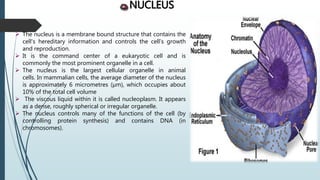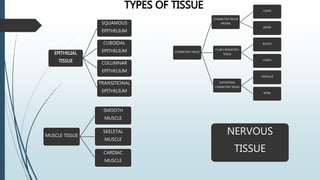The document provides information on cells and their structures. It defines the cell as the basic unit of life and describes key cellular components including the cell membrane, cytoplasm, nucleus, organelles like mitochondria and lysosomes, and other structures. It also explains the process of mitosis and how cells divide to form two daughter cells. Additionally, it discusses the four main types of tissues - epithelial, connective, muscle and nervous tissue - and provides details on their characteristics and functions.


































